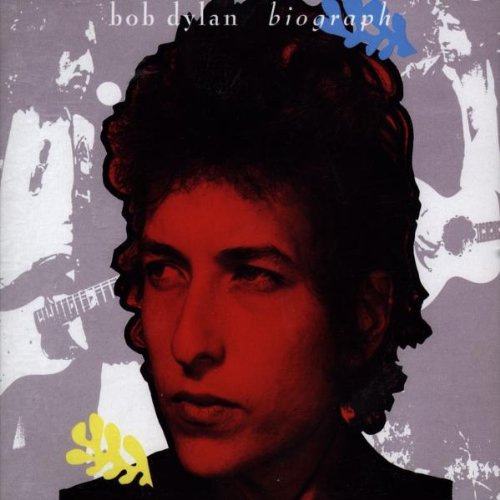By the time a classic rock canon was forming, The Police were already in it. They’d had unbelievably huge success, especially with their 1983 album Synchronicity. They’d made iconic music videos at a time when that really mattered. They’d garnered widespread critical respect for literate songwriting and inventive musicianship. And breaking up immediately after Synchronicity ensured that they wouldn’t hang around to tarnish their reputation with lesser works. (Well, except for “Don’t Stand So Close To Me ’86”.)
As a part of that enshrinement, all their albums have been elevated to a lofty position of regard, including their debut Outlandos D’Amour, ranked by Rolling Stone as one of the 500 greatest all-time albums, and one of the 100 greatest all-time debuts. All that reflected glory obscured from me a fact that only became clear upon closer scrutiny: this album is weird as hell.
Let’s start with the fact that its two biggest hits are about falling in love with a prostitute and killing yourself. Then let’s move on to the sound, a brilliant but bizarre mix of reggae and punk that kept the rhythmic pattern of Jamaican music but accelerated it to a speed and aggression that made it almost unrecognizable. For instance, Sting admits that “‘So Lonely’ was unabashedly culled from ‘No Woman No Cry’ by Bob Marley”, but you have to listen pretty hard to hear the resemblance. That “white reggae” inspired the title of their next album Reggatta De Blanc, which was just a little less peculiar than the title “Outlandos d’Amour”, which is not even really French or really Spanish or really anything.

The weirdness continues into individual songs. Here’s an easy one: “Be My Girl – Sally” starts with Sting singing the same five words over and over again (more on this later), but quickly swerves into Andy Summers telling a story about marrying a blow-up doll. Then back to Sting and the five words, over and over. This is a rock song.
Or how about “Peanuts”, which is a Dr. Seuss-esque jab at an overexposed sellout rock star (apparently based on Rod Stewart), but which devolves in the middle into a chaotic guitar solo from Andy Summers, notes all over the place with no particular regard for rhythm? Then after another chorus, an even stranger instrumental break from some woodwind (a clarinet? an oboe?) that skips around the scale, caroming off the drums in squeaks and warbles, and then Sting for some reason starts yelling “Peanuts! Peanuts! Peanuts!” like a ballgame vendor before fading out with the woodwind bouncing back and forth between the same two notes.
Or here’s one: “Masoko Tanga”, a phrase which means even less than the album’s title. This is five minutes plus of a cool bass groove, backed up by drums and guitar, underneath lyrics which are literally gibberish. Like, here’s a sample of how a lot of lyrics sites transcribe this stuff:
Don’t ba bose da la lomb ba bay
Ping pong da la zoe da la la low
People know what de lee do da day
Key wo wa di com la day wa da
With occasional feeble attempts at English transcription, along the lines of “Keep the sugar warmed up, hey!”. Then there’s Genius, which just lists the lyrics as:
[Ad-libbed chanting]
And that’s why I love you, Genius.
So you get it, right? This is weird, wild stuff, with the emphasis on weird. And yet… it works! It works magnificently. Why is that? Well, a lot of reasons I’m sure, but what I really dug when listening to it this week can be summed up in two words: STEWART COPELAND. I think this guy may be my favorite rock drummer. His drums and percussion bookend the album — the very beginning of “Next To You” and the very end of “Masoko Tanga” — and in between, they define the album.
He and Sting are the bedrock of that “white reggae” sound, and while I’m not much of a musician, that sound strikes me as no simple task musically. But that accomplishment aside, there’s so much to enjoy in Copeland’s work on this album. Check out the delicate hi-hat work on “So Lonely,” especially the latter half. Check out the caffeinated, skittering fills in “Can’t Stand Losing You.” Check out the furious toms in “Truth Hits Everybody.” I don’t normally notice the drums much in a song, but even I can hear the incredible creativity that Stewart Copeland brought to The Police, even in this first album. Later on, he’d conduct master classes on songs like “Walking In Your Footsteps” and “Message In A Bottle,” but this album shows that from the beginning, he was an incredibly mature and complex player.
Just one more thing. Robby’s mom used to call Sting “Repeat Man,” and while listening to this album, I couldn’t stop laughing about that. Sure, not all the songs are as repetitive as “Be My Girl – Sally”, but the majority of them are pretty damn repetitive. I’m reading Elvis Costello’s autobiography right now, and he mentions this in passing:
The best English groups lean forward and are more concerned with “How do we start?” than “How do we end?” This is just my theory, but it might explain the impact of early records by both The Who and the Sex Pistols and why so much great English music ends in chaos.
That certainly describes plenty of the songs on Outlandos d’Amour, which when they don’t end in chaos end in the same phrase over and over. I can’t I can’t I can’t stop repeating I can’t I can’t I can’t stop repeating I can’t I can’t I can’t stop repeating I can’t I can’t I can’t stop repeating…









